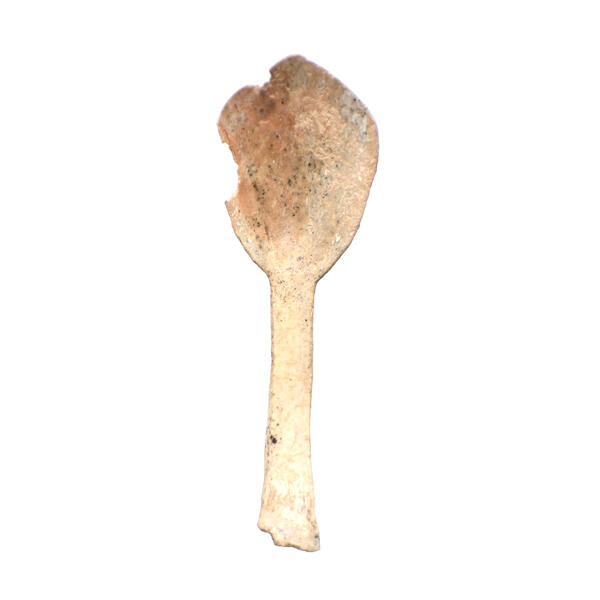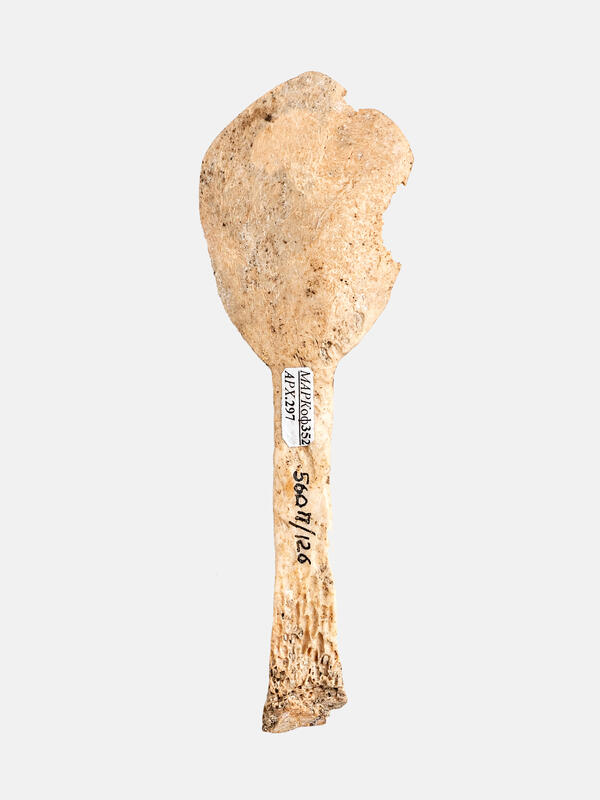The museum exhibition presents finds from the Pobeda burial ground in Kizilsky district, Chelyabinsk region. The burial mound was studied in 1999–2000 by the expedition of the Arkaim Museum-Reserve and Chelyabinsk State University led by the archeologists Alexander Tairov and Ilya Lyubchansky.
The Pobeda burial ground is located six kilometers northeast of the village of Zingeysky on a flattened hilltop and consists of three mounds with earthy, well turfed fill. Mound 3 was 20 meters in diameter and 0.8 meters high. Five grave pits were found under the mound. Among the finds were ceramic vessels, iron knives, a quiver with arrows (one bone arrowhead and twenty-three bronze ones), and the remains of an incomplete ram carcass.
The grave pit is embedded in the southwestern flank of the mound. The entrance to the burial chamber was closed with poles and blocks. A skeleton of a woman was excavated at the bottom of the burial chamber (1.1 meters deep). The buried woman was laid on her back, with her arms stretched along her body. There was a bronze torc around her neck and a silver ring on the ring finger of her right hand. At her right shoulder was a leather bag, inside which there was a bronze mirror with a long side handle, a bronze wheel amulet and an iron knife. At the right knee was a ceramic vessel, at the feet was a piece of chalk, two bone spoons, a shell, a ceramic spindle whorl and a round pebble.
The exhibition includes one of the found bone spoons. The piece is smoothly curved, has a flat handle subrectangular in cross-section, which widens towards the end. The bowl is ovoid in shape and shallow. The spoon was found near a pebble with traces of use in the form of clogs and abrasions. One flat surface of the pebble had a stain of burgundy-colored substance with white and beige spots, as well as a mollusk shell with a red stain. To all appearances, this spoon can be attributed to female household items associated with cosmetics and grinding of coloring substances.
The mound was erected in the 5th century BC. Its
materials demonstrate the emergence of the tradition of centric-circular layout
of burials under the mound fill, which was later developed in the Southern
Urals and Lower Volga region.




